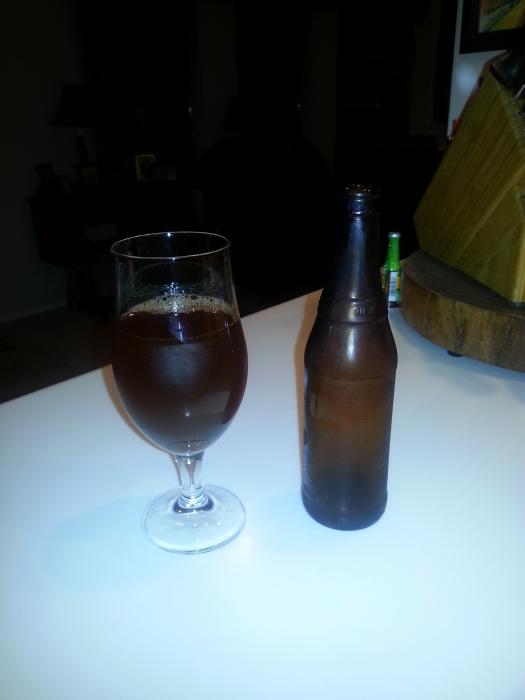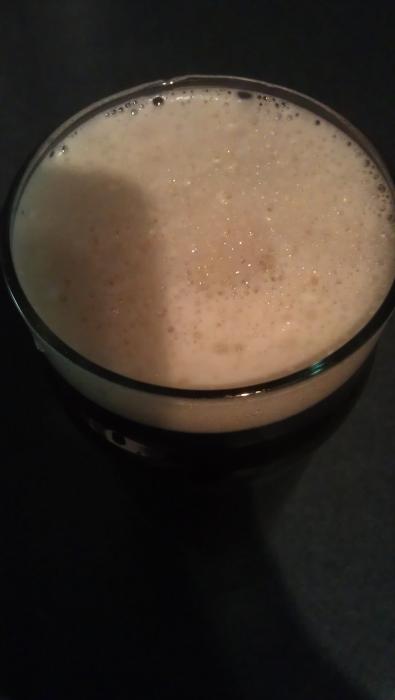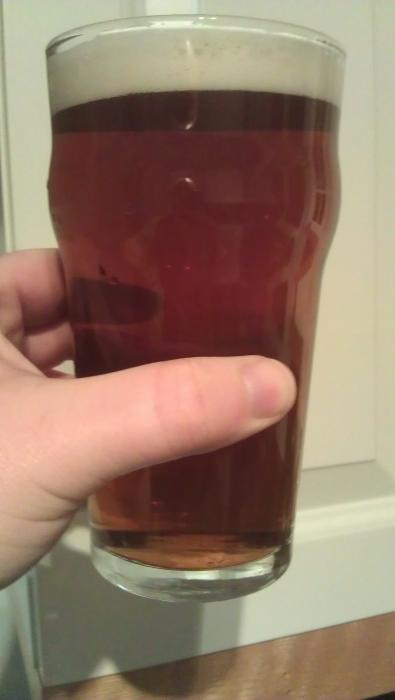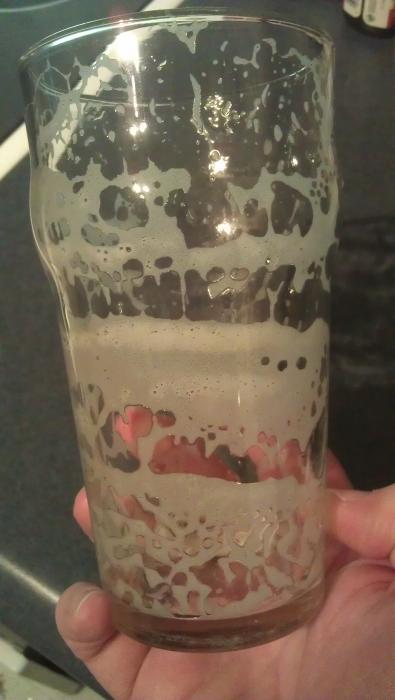The beer in your photo most certainly has carbonation. And as a beer drinker who enjoys a good ESB, I would be very interested in your brewing process of making a beer that looks like that without adding priming sugar. I am betting the OP would as well, since that was the entire purpose of his original post.
The attached three photos are of the same beer, poured last night from one bottle. I still don't know if the photo of the head really shows the texture but this is just the phone camera and it's not the best for close-ups. Again the aggressive pour produced the head, and the lacing in the empty glass is, in my opinion, excellent.
To make this I used the following ingredients;
5lb light malt extract syrup
1lb dark malt extract syrup
0.5lb molasses
1oz Northern Brewer pellets (marked as 4.8% AA by the LHBS)
1oz Fuggles pellets (marked as 7.2% AA by the LHBS)
1 pkg Windsor yeast
OG 1.044 - measured
FG 1.012 - measured
IBU 24 - estimated by the brew calculator
ABV 4.4% - estimated by the brew calculator
SRM 11 - estimated by the brew calculator
Brewed to 5 gallons
I use OxyClean to clean my brewing equipment and StarSan to sanitise it.
I boiled the hops on the stove in 1.5 litres of water, the Northern Brewer for 20 minutes and the Fuggles for 15 minutes. I made a last-minute filter using a sanitised steel strainer and paper coffee filters to filter out most of the hop matter as I poured the 'hop tea' into the fermenter (didn't plan on doing this but the pellets gave me little choice, I wasn't comfortable dumping that into the fermenter, maybe next time I will). To the hop tea I added the malt extracts, molasses, and a mix of boiled and cold water to bring the volume up to 5 gallons and achieve a temp of 70f. I pitched the yeast dry on to the aerated wort and maintained the temp at 70f throughout fermentation. I did not seal the fermenter completely, I left the lid on but not snapped down. After fermentation stopped (confirmed with gravity readings) I unplugged my heat source and let the beer cool to ambient temp, which was around 55f for the remainder of it's time in primary.
This beer stayed in primary for 3 weeks, but 2 days before bottling I added gelatin finings to improve the clarity, it worked very well (first time using gelatin). I bottled in 500ml brown glass bottles without using any priming sugar whatsoever, and left the beer in the bottles for 3 further weeks before drinking the first. From the outset it was smooth drinking, very sessionable, clear and very tasty (to my tastes). There are no off smells, no off flavours, I haven't noticed any oxidation yet. The hop aroma comes through well, very mild bittering which is what I was aiming for.
I am a new brewer, this is only my sixth batch, I don't pretend to know it all but I do know what good beer tastes like, and this batch is good beer. This was the first batch I ever made using a recipe I came up with using a brew calculator, my first time using hops, and my first time using gelatin (though that wasn't part of the original plan). I learned A LOT from this batch and the results far exceeded my expectations. To a lot of people I am sure I did things in making this batch you would swear up and down was the absolute wrong thing to do (no yeast starter, no seal on the fermenter, filtering out the hop matter etc), to that I say try it yourself and see.
Hfx














![Craft A Brew - Safale BE-256 Yeast - Fermentis - Belgian Ale Dry Yeast - For Belgian & Strong Ales - Ingredients for Home Brewing - Beer Making Supplies - [3 Pack]](https://m.media-amazon.com/images/I/51bcKEwQmWL._SL500_.jpg)















































